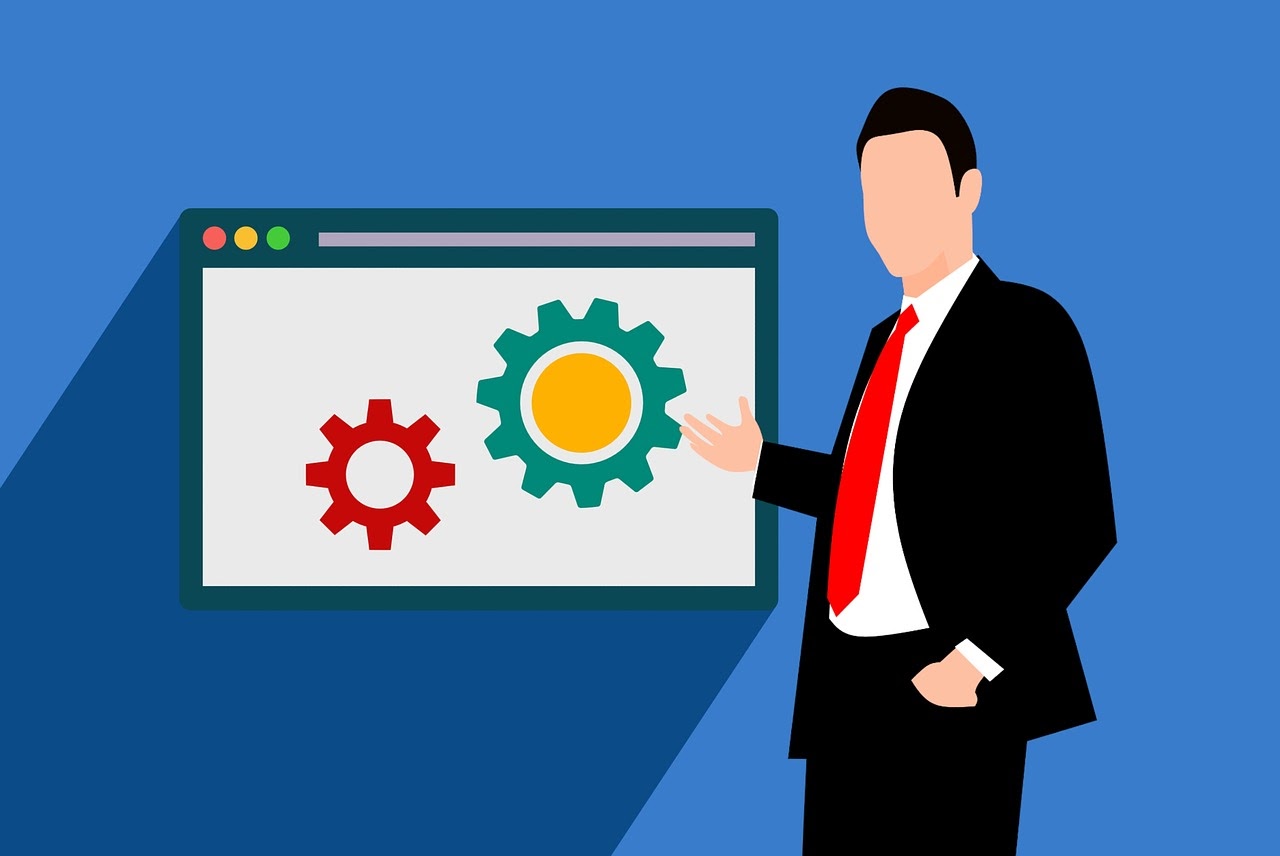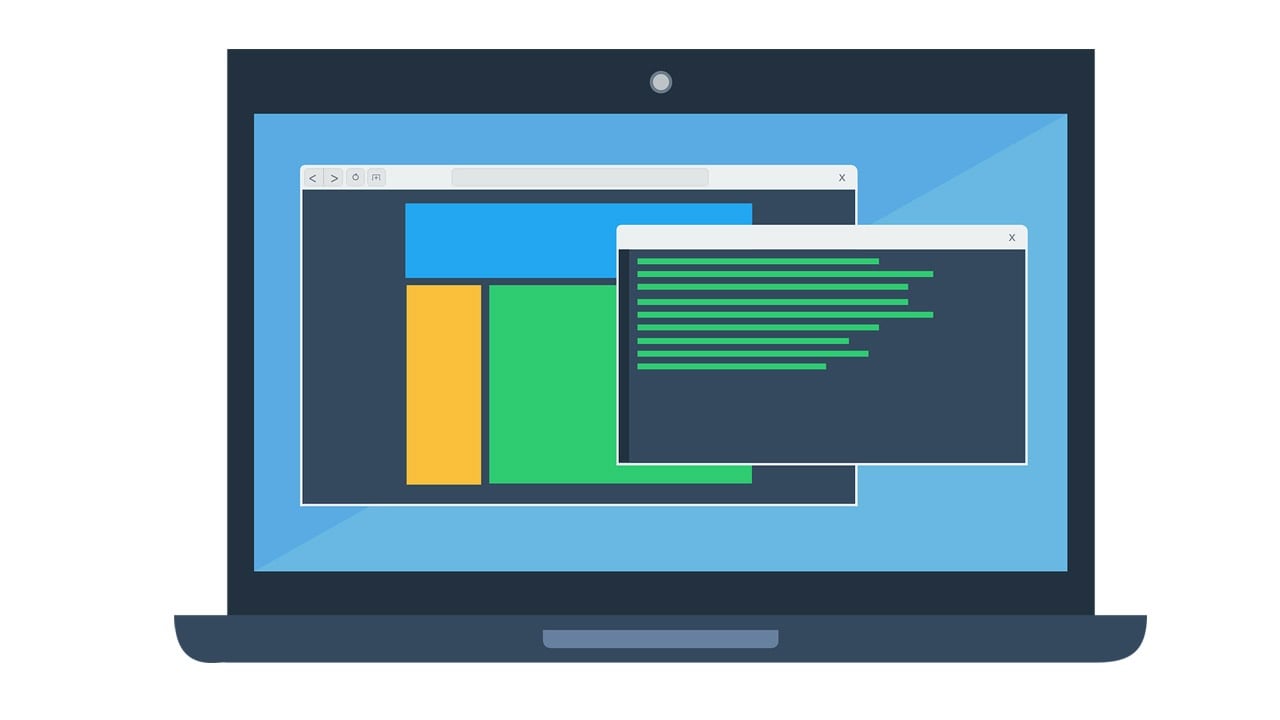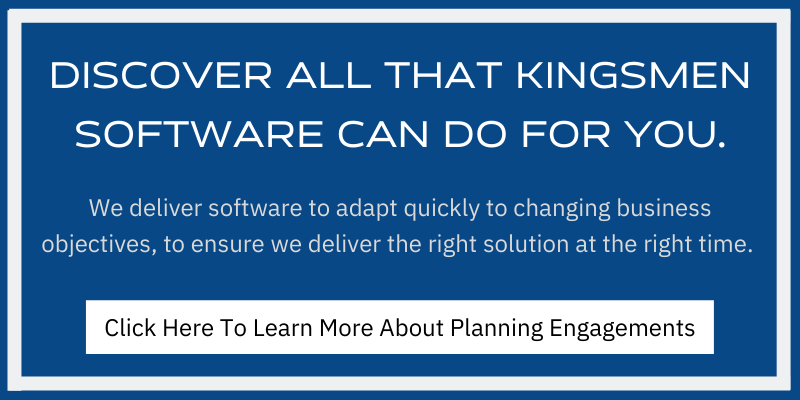
Software planning engagements help set and manage expectations for any product creation process. This engagement model offers transparency and clarity to clients while also showing them outcomes and deliverables.
We’re going to examine the software planning engagement process and its benefits to help you better understand how these meetings can enhance your development processes.
What Are the Steps for an Effective Software Planning Engagement?
Software planning engagements have a specific method: marrying high-level business needs with technical requirements.
These engagements provide clients with an architectural runway through modeling, help them understand how to sell a product to their customers, and then lay out the requirements of their product.
Software planning engagements at Kingsmen Software utilize the following steps:
- Define the Vision
- Analyze the Work
- Scope the Solution
- Make It Operational
Define the Vision
In this step, we establish the project’s vision, objectives and key results (OKRs), user experience (UX) personas, and project guardrails. These establish the groundwork and direction that development will take.
Analyze the Work
This is the step where we plan out the necessary work to complete a project, starting with domain modeling. This method helps the development team understand a customer’s environment on their terms. We also work with the client to build multiple diagrams, including physical and logical architecture. Application portfolio and CI/CD tooling analyses are also crucial to understanding how the project development will progress.
Scope the Solution
Scoping the solution is when we create the plan for a project, which begins with building a feature map. This is where you figure out what the software you’re building is, what it does, and what problems it solves. A feature map should also include how your client wants the software to look and how they want it to display for their customers. This step also includes feature/function writing, sizing and prioritizing, creating a prioritized roadmap, building a release/iteration schedule, infrastructure planning, and CI/CD platform design.
Make It Operational
This is where the project starts to come online. This step in the software planning engagement includes establishing findings, work intake, backlogs, routines, roles & responsibilities, the transition to execution, surveying customers, updating collateral, and measuring the results.
Once you know these steps, ask your client this question: What aspects are most important?
This question helps you determine what features/functions to address first. People often want software teams to jump right in and start coding. But without planning, how will they know where to begin? Having an order of importance in place is crucial.
When you finish a planning engagement, you and your client should both know what the software is going to look like, where and how it’s going to run, and the roadmap to delivery. You also need to set terms for how often features or portions of the product are delivered.
Now, a software planning engagement shouldn’t give you every detail about a product. These engagements should provide enough details about the first features to work on and an idea of what you’ll work on in the future. This allows you to pivot or reprioritize as plans change.

What Are the Benefits of a Software Planning Engagement?
An engagement plan gives your team an early understanding of what they’re working on. This allows them to plan ahead and be ready for any changes or reprioritizations.
For your customers, planning engagements establish and present product outcomes. It’s crucial to set goals and outcomes if you want a software plan to be successful. The models and maps created during software planning engagements outline deliverables and how they will help their business, which provides real value.
Planning engagements also offer complete transparency for clients. It’s important to build trust and rapport with them, especially when you’re in charge of their software or infrastructure. The customer is involved throughout a software planning engagement, keeping them satisfied and trusting.
In summation, planning engagements give clients a vision, a language for what has to be done, and help them see what they need to do and what is achievable.

Why Are Software Planning Engagements Important?
Software planning engagements are the perfect way to set expectations and create a roadmap before getting to work.
Figuring out where problems live and deciding on important architectural aspects allow you to merge high-level business needs with key technical aspects. Simply put, these engagements present value for both you and your clients.
A software planning engagement is an essential part of any software delivery project, so make sure you aren’t overlooking it.

